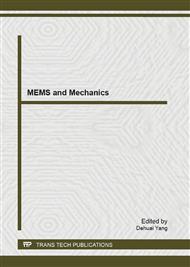p.579
p.584
p.590
p.596
p.602
p.609
p.616
p.621
p.627
Placement Optimization of Smart Piezoelectric Rods for Shape Control of Large Cable-Network Antenna Structures
Abstract:
Large cable-network antennas are typical flexible space structures, which will inevitably generate deformations under various disturbances from out space. To avoid the degradation of shape accuracy due to deformations, it is imperative to find effective approaches to implement shape control for such antennas. In this paper, a novel application of smart piezoelectric rods that are mounted in the ring truss supporting structure of the antenna is presented to solve the shape control problem. The control mechanism is to generate displacements in opposite direction to resist primal deformations by using the direct piezoelectric effect of piezoceramic materials. Based on the genetic algorithm, optimal locations of the smart piezoelectric rods used for shape control is analyzed in the study. Numerical results demonstrate that the present shape control approach with appropriate placement of smart piezoelectric rods is feasible and effective.
Info:
Periodical:
Pages:
602-608
Citation:
Online since:
June 2013
Authors:
Price:
Сopyright:
© 2013 Trans Tech Publications Ltd. All Rights Reserved
Share:
Citation:


